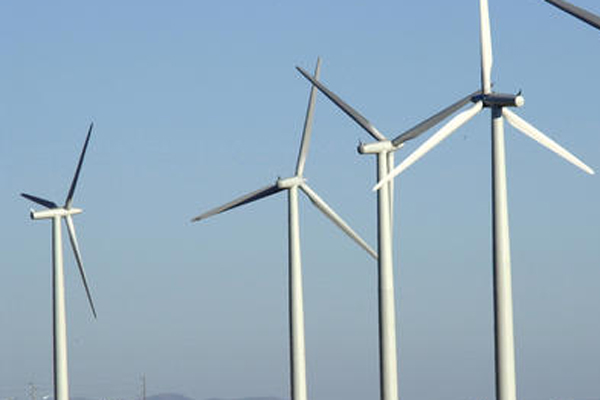
Multilateral institutions drive growth in Mena renewables
MANAMA, July 10, 2018
Jordan and Morocco are spearheading the renewable development in the Mena region, while Egypt is also showing promising signs of kickstarting its ambitious renewable programme, says a report.
The Arab Petroleum Investments Corporation (Apicorp), a multilateral development bank focused on the energy sector, today published its latest energy research report, which looks at the critical role of multilateral institutions in Mena’s renewable sector.
According to the report, several energy-importing countries continue to accelerate the development of their renewable energy sectors as they aim to curb fuel imports. More limited fossil fuel production and a reliance on fuel imports to meet domestic demand and rising import bills have pushed Morocco and Jordan, for example, to diversify their energy sources.
At a time when renewable energy development in the Arab world continues to gain momentum, with governments recognising the urgency of tackling rising demand for energy, the research shows that financing remains an issue. Multilateral development banks (MDBs) and development agencies are playing a critical role in funding projects in countries like Egypt, Jordan, and Morocco, whilst international banks have historically been reluctant to invest.
Ghassan Al-Akwaa, energy sector specialist at Apicorp, commented: “Our report this month raises some interesting points about the funding of renewables projects, and shows that the rationale for MDBs’ interest in financing the energy sector is threefold. Firstly, they recognise that energy and development go hand in hand, with proper access to electricity being one of the main drivers of sustainable economic growth. MDBs are also committed to addressing climate change, particularly since the World Bank announced that it will no longer provide investments in the upstream oil and gas sector after 2019, in line with the Paris Agreement in 2015. Lastly, MDBs are prepared to finance risky projects if there is a strong development mandate, and they are comfortable with lending terms of 20 years or more, which is typical for renewable energy projects.”
Mustafa Ansari, senior economist, added: “Undoubtedly, renewable energy developments in the Arab world have gained momentum in recent years, driven by the strong support from governments that recognise the urgency of tackling increasing demand for energy. But countries such as Morocco, Jordan, and Egypt, which are spearheading this growth in the region, are facing challenging fiscal conditions, which have meant financing has had to be sourced from the private sector or international community. MDBs and development institutions have been pivotal in the financing of renewables projects, with transportation and power generation being a major focus over the past years, and we expect to see MDBs continue to play an important role in the future, as they prioritize green energy in an effort to address climate concerns. That said, whilst only a few years ago commercial banks were reluctant to enter this sector, many are growing increasingly familiar with the region’s renewables market and we expect commercial banks to increase competition for MDBs in the financing realm.”
Jordan’s success story
MDBs have been instrumental in Jordan’s renewable energy success story. The country has made impressive strides in its renewable sector in recent years with the commissioning of the 117MW Tafila wind project in the second half of 2015 – a milestone for the kingdom. The International Finance Corporation (IFC), European Investment Bank (EIB), and other international institutions provided financing for the $287 million project. The country is also expecting that two major wind additions will come on line in 2018 - Korea’s Kepco 89.1MW Fujeij wind project, financed by the Korean export agency and Japan’s Mizuho, and the 86MW Al Rajef wind project in Ma’an, financed by the European Bank for Reconstruction and Development (EBRD) and Proparco.
As for PV, the country’s ambitious target to reach 1GW by 2020 is also heavily dependent on financing from MDBs and other development agencies. The 103MW Quweira PV plant came on line this year in southern Jordan and was funded by the Abu Dhabi Fund for Development. More recently, the UAE’s renewables company Masdar announced that it will build a 200MW PV plant in Jordan, which will be backed by the IFC and is expected to come on line in 2020.
Morocco on track
Similarly, in Morocco, the government’s target of 2GW of solar and 2GW of wind power by 2020 is on track, with wind capacity already at over 800MW. The country has made further impressive developments in its wind sector: five wind projects totalling 850MW have already been awarded, with record bids ranging from $25-30/MWh. The multi-billion-dollar CSP project is financed by international development agencies including the EIB and the African Development Bank (AFDB), and KfW. Additionally, the 850MW of wind projects currently under construction are being financed by the EIB and KfW, who are leading international institutions in providing debt financing in the country.
Investor interest in Egypt
In Egypt, solar projects have been slow to progress, although there has been strong interest by investors in the Egyptian market. The country’s low foreign reserves, volatile pound, and arbitration rules which require settlements to be made in Egyptian courts, were all major concerns to international investors. More recently, though, these concerns have eased, as tariffs have been reduced and the arbitration rules have been relaxed. The growing commitment of international lenders such as the IFC and EBRD are helping attract much needed funds into the sector. Currently, the country is pushing through with its plans to develop a 1.8GW solar park in Benban. The EBRD and IFC committed $1.6 billion for 27 solar projects throughout the country, having reached financial closure for a 400MW project to be developed by Norway’s ScatecSolar. - TradeArabia News Service







